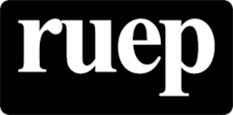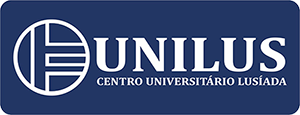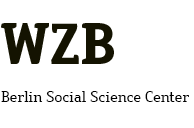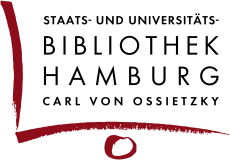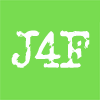IMUNOSSUPRESSÃO NA ADOLESCÊNCIA APÓS ATIVIDADE FÍSICA EXCESSIVA
Resumo
O treinamento físico de intensidade moderada leva a melhora dos sistemas de defesas enquanto que o treinamento intenso causa imunossupressão. Tem como objetivo verificar a associação entre imunossupressão após atividade física de grande intensidade em adolescentes. Trata-se de uma revisão sistemática dos estudos previamente desenvolvidos sobre imunossupressão em adolescentes, com uma busca dos mesmos através do PUBMED e do Scielo, com os descritores IMMUNOSSUPRESSION e PHYSICAL EXERCISE. Como resultado, foram incluídos dois artigos com o score ≥ 3. Conclui-se que nesse estudo há uma janela de imunodeficiência em um período imediato a prática esportiva de alta intensidade e sobrecarga metabólica.
Palavras-chave: Imunossupressão. Exercício Físico. Adolescentes.
Texto completo:
PDFReferências
REFERÊNCIAS
BASSIT, R.; SANTOS, R.V.T,.; CAPERUTO, E. C.; ROGERI, P.S.; MARTINS, E.; VAISBERG, M.. BCAA supplementation and the immune response of long-distance athletes. In: Med Sci Sports Med. – International Society of Exercise and Immunology. Vol 33:22. 2001
BAXTER-JONES A.D.G, THOMPSON A.M, MALINA, R.M. Growth and maturation in elite Young female athletes. In: Sports Medicine and Arthroscopy, Vol 10:42-49. 2002.
BESEDOVSKY, H.O.; DEL REY, A.E.; SORKIN, E.. Immune neuroendocrine interactions. In: J Immunol, Vol 135: 150s-4s. 1985.
CALDER, P.C. & YAQOOB, P..Glutamine and the immune system. In: Institute of Human Nutrition, University of Southampton, Bassett Crescent East,Southampton and Hugh Sinclair Unit of Human Nutrition, Department of Food Science and Technology, University of Reading, Whiteknights, Reading, United Kingdom Accepted April 30, 1999
CASTELL, L.M & NEWSHOLME, E.A.. The relationship between glutamine and the immunodepression observed in exercise. In: Amino Acids 20:49–61. 2001.
DAMSGAARD R.; BENCKE J.; MATHIESEN G.; PETERSEN J.H.; MÜLLER J. Body proportions, body composition and puberal development of children in comparative sports. In: Scandinavian Journal of Medicine & Science in Sports, Oxford, Vol 11: 54-60. 2001
GABRIEL H. & KINDERMANN W.. The acute immune response to exercise: what does that mean?. In: Int J Sports Med, 18: 28-45.1997 Med 1
GLEESON, M.; MCDONALD A.W.;CRIPPS A.W.; PYNE D.B.; CLANCY R.I.; FRICKER P.A.. The effect on immunity of long-term intensive training in elite swimmers. In: Clin Exp Immunol, 102: 210-216.1995.
GLEESON, M.; Imune function in sport and exercise. In: Journal of Applied Physiology. Vol 103: 693-699. 2007
JONSDOTTIR, I.H.. Exercise immunology: neuroendocrine regulation of NK cells. In: J Sports Med., Vol 1, Suppl 1, S: 20-3. 2000.
LEANDRO, C.G.; CASTRO, L.M.; NASCIMENTO, E.; PITHON-CURI, T.C.; CURI, R.. Mecanismos adaptativos do sistema imunológico em resposta ao exercício físico. In: Rev Bras Med Esporte, Vol 13, Nº 5. 2007.
LEHMKUHL M., MALONE M., JUSTICE B., PISTILLI E., VINCI D. The effects of 8 weeks of creatine monohydrate and glutamine supplementation on body camposition and performance measures. In: Journal of Strength and Conditioning Research Storrs, Vol 17(3):33-8, 1992.
LIMA, M.C.S.. Atividade física na adolescência. In: Pediatria Moderna, VOL. 37. Edição Especial. 2001
MACKINNON, L.T.. Chronic exercise training effects on immune function. In: Med Sci Sports Exerc 32, S369–S376.2000.
MALM. C.; EKBLOM O. & EKBLOM B..Immune system alteration in response to two consecutive soccer games. In: Acta Physiol Scand 180, 143–155.2004.
MALM. C.; EKBLOM O. & EKBLOM B..Immune system alteration in response to increased physical training during a five day soccer training camp. In: Int J Sports Med 25: 471-476.2003.
MIGDLEY, A.W.; MCNAUGHTON L.R.; & SLEAP M..Infection and the Elite Athlete: A Review.In: Research in Sports Medicine 11: 235–259, 2003
NOBREGA, A.C.. The subacutes effects of exercises: concept, characteristics and clinical implications. In: Exerc Sport Sci Rev., Vol 33: 84-7. 2005.
NIEMAN D.C.; BRENDLE D.;HENSON D.A.. Immune function in athletes versus non-athletes. In: Int J Sports Med 16: 329 – 333 . 1995.
NIEMAN D.C.; BUCKLEY K.S..;HENSON D.A..immune function in marathons runners versus sedentary controls. In : Med Sci Sports Exerc 27: 986 – 992 . 1995.
PEDERSEN, B.K.. In:Exercise Immunology, p. 206. R.G. Landes Company, Georgetown.1997.
PEDERSEN, B.K.; HOEFFMAN-GOETZ, L.. Exercise and the immune system: regulation, integration and adaptation. In: Physiol Rev. , Vol 80: 1055-81. 2000.
PERES, C.M.; OTTON, R.; CURI,R.. Modulation of lymphocyte proliferation by macrophages and macrophages loaded with aracdonic acid. In: Cell Biochem Funct., Vol 23: 373-81. 2005.
PETERS, E.M.. Exercise, immunology and upper respiratory tract infections. In: Int J Sports Med, 18:S69-77, 1997.
ROSA, L.F.P.B.C.; VAISBERG, L.W.. Influência do exercício na resposta imune. In: Rev Bras Med Esporte., Vol 8, No. 4. 2002.
SILVA, C.C, GOLDBERG T.B.L, TEIXEIRA A.S, MARQUES I. O exercício físico potencializa ou compromete o crescimento longitudinal de crianças e adolescentes? Mito ou verdade? Revista Brasileira de Medicina do Esporte. Vol 10(6):520-4. 2004.
TIMMONS, B.W.; TARNOPOLSKY, M.A.; SNIDER, D.P.; BAR-OR, O.. Immunological changes in response to exercise: Influence of age, puberty, and gender. In: Med. Sci. Sports Exerc, Vol 38, 293-304. 2006.
KAKANIS, M.W.; PEAK, J.; BRENU,E.W.; SIMMONDS, M.; GRAY, B.; HOOPER, S.L.; MARSHALL-GRADINSKY, S.M.. The open window of susceptibility to infection after acute exercise in healthy young male elite athletes. In: http://www.medizin.uni-tuebingen.de/transfusionsmedizin/institut/eir/content/2010/119/article.pdf
Apontamentos
- Não há apontamentos.
Direitos autorais 2016 Revista UNILUS Ensino e Pesquisa - RUEP
ISSN (impresso): 1807-8850
ISSN (eletrônico): 2318-2083
Periodicidade: Trimestral
Primeiro trimestre, jan./mar., submissões até 31 de março, publicação da edição até 15 de agosto.
Segundo trimestre, abr./jun., submissões até 30 de junho, publicação da edição até 15 de outubro.
Terceiro trimestre, jul./set., submissões até 30 de setembro, publicação da edição até 15 de janeiro.
Quarto trimestre, out./dez., submissões até 31 de dezembro, publicação da edição até 15 de abril.

Este obra está licenciado com uma Licença Creative Commons Atribuição-NãoComercial-SemDerivações 4.0 Internacional.
Indexadores
Estatística de Acesso à RUEP
Monitorado desde 01 de dezembro de 2025.
Monitorado desde 22 de novembro de 2016.
